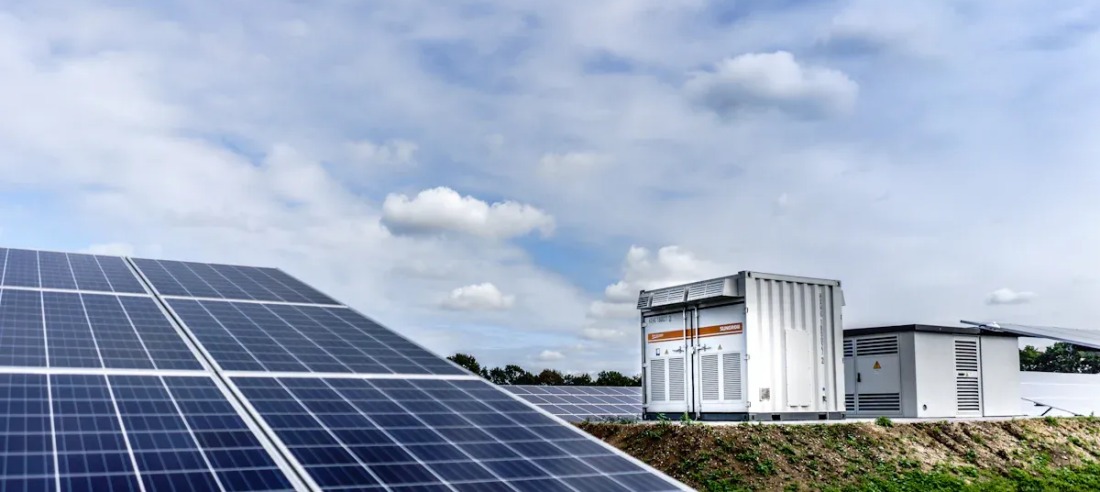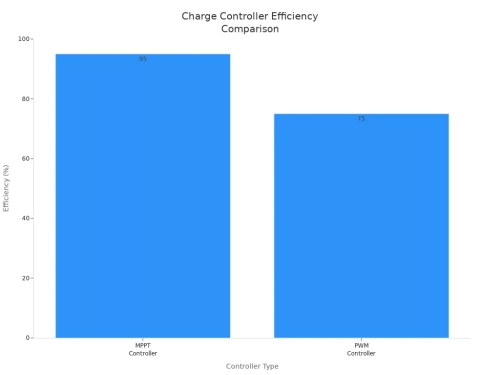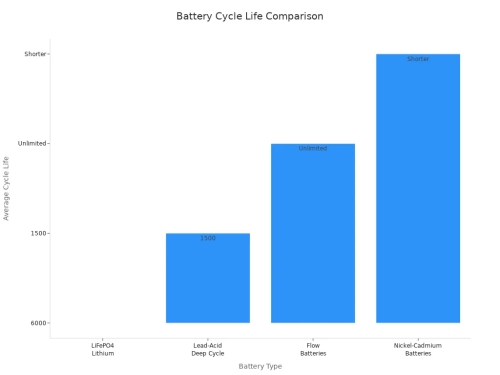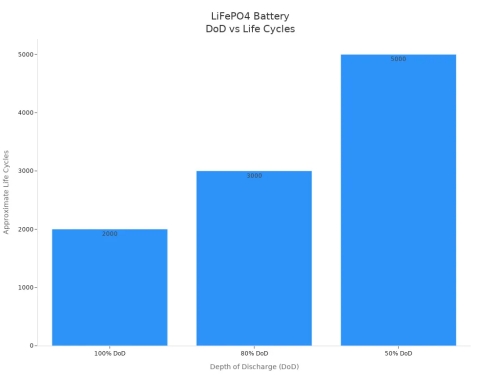How do lithium solar batteries power remote lighting systems without relying on the grid?

A deep cycle LiFePO4 solar battery keeps energy from solar panels. It gives power to remote lighting systems without needing the grid. This technology makes things safer and more reliable. It works well even in tough weather. It can handle thousands of charge cycles. It also lowers the chance of getting too hot. Rural communities use these systems to light homes, schools, and streets. This helps people feel safer and live better. Many governments give tax credits and rebates. This makes solar lighting cheaper and helps more people use it in areas that need it most.
LiFePO4 lithium solar batteries keep energy from solar panels. They use this energy to power remote lights. These lights do not need the grid.
Solar panels, charge controllers, batteries, inverters, and LED lights work as a team. They collect, store, and use solar energy well.
These batteries last longer and are safer than lead-acid batteries. This makes them great for faraway places.
The system needs the right size, good setup, and care. Cleaning the panels helps the lights work well for a long time.
Smart features like motion sensors and timers help save energy. These let the lights work for many hours, even on cloudy days or at night.
Solar panels take sunlight and make electricity. They use photovoltaic cells to create direct current (DC) power in the daytime. This power charges the battery and turns on the lights. Solar panels work best in sunny, clean places. They let remote lighting systems work without the grid.
Solar panels:
Change sunlight into DC electricity
Give clean energy
Need only a little care
Charge controllers control how electricity moves from solar panels to the battery. They keep the battery from getting too full or too empty. The MPPT controller is the best kind. MPPT controllers change settings for sunlight and weather. This helps the battery charge fast and safely.

|
Feature |
MPPT Controller |
PWM Controller |
|
Efficiency |
Up to 95%, can reach 98% or higher |
70-80% |
|
Voltage Regulation |
Precise and effective for lithium |
Limited |
|
Energy Harvesting |
Optimized via dynamic adjustment |
Basic |
|
Best Use |
Lithium batteries and complex systems |
Lead-acid batteries |
The off-grid lithium solar battery system keeps the electricity from the solar panels. It saves the power for nighttime or cloudy days. This battery lasts much longer than lead-acid batteries. It does not need much care. It works well in hot or cold places and charges fast.
|
Feature |
LiFePO4 Battery |
Lead-Acid Battery |
|---|---|---|
|
Lifespan |
3000-5000 cycles |
300-500 cycles |
|
Efficiency |
Around 95% |
Around 85% |
|
Maintenance |
Minimal |
Regular upkeep |
|
Safety |
High |
Lower |
Note: The LiFePO4 Lithium Solar Battery costs more at first, but it saves money over time because it lasts longer and needs less maintenance.
Inverters change the DC power from the battery into AC power. Most lights and devices need AC power to work. The inverter acts like a bridge. It lets the stored solar energy run the lights. Hybrid inverters also help charge the battery and keep the system safe.
Lighting fixtures use the stored power to make light. LED fixtures are best because they use less energy and last longer. A 10-watt LED can be as bright as a 60-watt old bulb. Some lights have motion sensors or timers to save power. Good lighting fixtures help the system last longer and use less battery power.
Solar panels collect sunlight during the day. They use the photovoltaic effect to make DC electricity. Most remote lighting systems need 6 to 8 hours of sunlight to charge batteries. The energy collected depends on sunlight, panel angle, and weather. Panels work best when clean and facing the sun. Even on cloudy days, panels can still get some energy, but less. Cleaning and tilting panels toward the sun helps get more energy.
Tip: If you tilt solar panels at a 30–45° angle and keep them clean, you can get up to 20% more energy, even when it is cloudy.
LiFePO4 batteries store energy very well, often above 97%. This means almost all the energy from the panels gets saved for later. For large projects that need longer lighting hours, choosing a high capacity LiFePO4 solar storage option ensures enough backup even in winter or rainy seasons.
Here is how the process works step by step:
Solar panels collect sunlight and make DC electricity.
The charge controller sends electricity to the LiFePO4 Lithium Solar Battery.
The battery keeps the energy until it is needed.
The inverter changes DC power to AC power for the lights.
The system controller and sensors change lighting levels and check how well things work.
When the sun sets or clouds block sunlight, the system uses stored energy to power the lights. The LiFePO4 Lithium Solar Battery sends electricity to the lights, usually LED lights. LED lights use less power and last longer. A full battery can run a remote light for about 12 hours at night. Some systems have enough backup to keep lights on for days without sunlight. Smart features like motion sensors and timers help save energy by dimming or turning off lights when not needed.
|
Parameter |
Specification |
|---|---|
|
LED Power |
60W |
|
Battery Type |
LiFePO4 Lithium Battery |
|
Battery Capacity |
3.2V / 12Ah |
|
Working Time |
12 hours per night |
|
Charging Time |
8 hours |
|
Backup Days |
More than 7 days |
Lithium solar battery systems keep lights on during cloudy weather or long nights by:
Saving extra energy on sunny days for later.
Using batteries that work well in cold or wet places.
Lowering brightness to save power when sunlight is low.
Having enough battery power for many days of backup.
Note: Cleaning panels and checking sensors often helps the system work well in any weather.
LiFePO4 Lithium Solar Battery lasts a very long time. It can work for many years without needing to be replaced often. Remote lighting systems need batteries that last for years. The table below shows how LiFePO4 batteries do better than other types:
|
Battery Type |
Average Cycle Life |
Lifespan Characteristics |
|---|---|---|
|
LiFePO4 Lithium Batteries |
Over 6,000 charge cycles |
Long lifespan, high depth of discharge (DoD), low maintenance |
|
Lead-Acid Deep Cycle |
Fewer cycles (<1,500) |
Shorter lifespan, requires regular maintenance |
|
Flow Batteries |
Virtually unlimited |
Suited for large off-grid homes |
|
Nickel-Cadmium Batteries |
Shorter lifespan |
Lower safety and shorter cycle life |

A LiFePO4 Lithium Solar Battery can be charged and used thousands of times. This helps lights work for many years. The battery’s capacity decides how long the lights stay on. If you use less of the battery each time, it lasts longer. This keeps the lights working well.
|
Depth of Discharge (DoD) |
Approximate Life Cycles |
Impact on Remote Lighting Performance |
|---|---|---|
|
100% DoD |
~2,000 cycles |
Full discharge shortens lifespan |
|
80% DoD |
~3,000 cycles |
Balances capacity and lifespan |
|
50% DoD |
~5,000 cycles or more |
Extends battery life and reliability |

LiFePO4 Lithium Solar Battery uses lithium iron phosphate inside. This makes the battery very stable and safe. It does not get too hot or catch fire easily. The battery works well in both hot and cold weather. This keeps remote lighting systems safe and working.
The battery is also very efficient. It can store and give back almost all the energy it gets. Its round-trip efficiency is about 95-98%. Lead-acid batteries only reach about 80%. LiFePO4 batteries do not need a special charging step that wastes energy. They keep a higher voltage when used and can be used more deeply without harm. These things help remote lighting systems use solar power better and waste less energy.
Tip: LiFePO4 Lithium Solar Battery does not need much care, so it is great for faraway places.
LiFePO4 Lithium Solar Battery can charge fast when the sun is bright. Sometimes, it can charge in just 30 minutes. Slower charging can take more than 4 hours. Fast charging uses more voltage, but slow charging helps the battery last longer. Remote lighting systems like quick charging because they can save energy even on short sunny days.
LiFePO4 Lithium Solar Battery is better for the environment than lead-acid batteries. Lead-acid batteries have harmful lead and acid that can hurt soil and water. LiFePO4 batteries use safe materials and are easier to recycle. They last longer, so you do not need to replace them as much. This means less waste. The battery’s safe chemistry lowers the risk of leaks and fire. These things make LiFePO4 batteries a greener choice for solar lighting in remote areas.
Sizing the system right helps lights work well. It also makes them last longer. You need to do a few steps:
Figure out how much energy you use each day. Add up the watts for all lights. Multiply by how many hours they are on.
Pick the battery size. Think about how much energy you need each day. Decide how many backup days you want. Check the depth of discharge, system voltage, and inverter efficiency.
Choose the solar panel size. Use the battery size and how many sunny hours you get. Add extra for cloudy days and system losses.
Use lights that save energy. LEDs and smart controls use less power. This means you need smaller batteries and solar panels.
Tip: Using good lights and planning for backup days helps the system work in bad weather.
Installing the system the right way keeps it safe and working well. Here are the main steps:
Put solar panels where they get lots of sun. Keep them away from shade.
Mount lights so wind and weather cannot hurt them.
Follow the instructions for height, angle, and spacing.
Check and clean panels and lights often.
Write down when you do maintenance. This helps you find problems early.
Use remote monitoring to see data and get alerts.
Checking the site helps you pick the best panels and batteries. Good, weatherproof wires stop energy loss and overheating. Test all parts before using them to make sure they work.
Taking care of the system helps it last for years. The table below shows what to do:
|
Maintenance Task |
Description |
|---|---|
|
Panel Cleaning |
Wash panels with water and mild soap. This keeps them working well. Do not use rough things. |
|
Battery Cleaning |
Unplug batteries and wipe them with a damp cloth. This keeps the ends clean. |
|
Charge Controller Check |
Make sure wires are tight when cleaning batteries. |
|
Inverter Care |
Clean dust once a year. Check the fan. Keep flammable stuff away. Use appliances that save energy. |
Note: Checking for swelling, leaks, or loose wires stops big problems. Remote monitoring can warn you before something fails.
LiFePO4 lithium solar batteries help remote lighting systems work without the grid. These batteries can be used many times and last a long time. They work in very hot or cold weather and do not need much care. Many solar lights use these batteries because they work well in rain, snow, or heat. People can make their systems better by cleaning the panels and picking the right battery size. They should also check the wires often. When planning a new system, it is smart to talk to a solar expert. People should look at how much sunlight the place gets and pick batteries with good safety features.
LiFePO4 batteries can be used for over 6,000 charges. Many systems use them for more than 10 years. Their long life makes them great for remote lighting.
Yes. The battery saves extra energy from sunny days. It uses this power when there is not much sunlight. Some systems can keep lights on for days without sun.
LiFePO4 batteries have a stable inside. They do not get too hot and do not leak. This makes them safe for outdoor and faraway places.
People should clean the solar panels and check wires often. They also need to look at batteries for swelling or damage. Most systems only need simple care.
Yes. More lights can be added if the battery and solar panels are big enough. People should check the system’s limits before adding new lights.

Add :5th Floor, Building B, No.2817 Kaichuang Avenue, Science Zone, Huangpu District, Guangzhou, China
Anern Industry Group Limited Todos os direitos reservados
.Xml | política de Privacidade  REDE SUPORTADA
REDE SUPORTADA